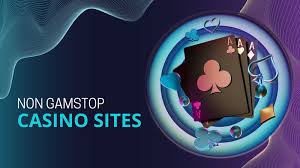
Art is an essential part of human existence, reflective of our thoughts, emotions, and the cultures from which we originate. The diverse spectrum of art encompasses painting, sculpture, music, dance, theater, and more. It serves not only as a form of expression but also as a powerful tool for communication and social change. Understanding art opens a window into the human experience and its many dimensions. The involvement in arts can significantly enrich our lives, as emphasized by organizations like head4arts, which promote inclusivity and accessibility in the arts.
The Historical Roots of Art
The history of art is as old as humanity itself. From the prehistoric cave paintings in Lascaux, France, to the sophisticated sculptures of ancient Greece, art has been a key indicator of societal values and beliefs. Early art was often linked to survival, as seen in cave paintings that depicted hunting scenes. These artworks also served spiritual or religious purposes, believed to influence success in hunting or to appease gods.
Art Through the Ages: Major Movements
As civilization progressed, so too did the art movements that emerged from different cultures and societies. Each era brought with it distinct styles, techniques, and philosophies. The following are some of the most significant periods in the history of art:
- The Renaissance (14th-17th centuries): A rebirth of classical ideas that emphasized humanism and the beauty of the natural world, with notable figures such as Leonardo da Vinci and Michelangelo.
- Baroque (17th-18th centuries): Characterized by dramatic expressions and grandeur, artists like Caravaggio and Rembrandt embraced the use of light and shadow.
- Romanticism (late 18th-19th centuries): Focusing on emotion and individualism, this movement celebrated nature and the sublime, with artists like Turner and Delacroix.
- Impressionism (late 19th century): Marked by a focus on light and color, impressionists like Monet and Degas broke away from traditional techniques to capture fleeting moments.
- Modernism (20th century): Rejecting past conventions, artists explored new forms and ideas, leading to movements like Cubism, Surrealism, and Abstract Expressionism.
- Contemporary Art (21st century): Encompassing a variety of styles and mediums, contemporary art often engages with current social issues and utilizes technology and new media.
The Role of Art in Society
Art possesses the unique ability to reflect and influence societal changes. It serves as a mirror reflecting the realities of the world, capturing the zeitgeist of a particular period. Artists often act as commentators, critiquing social, political, and environmental issues through their work.

Additionally, art plays a pivotal role in fostering community and unity. It allows individuals to connect on an emotional level, share experiences, and provoke thought. Public art projects, exhibitions, and performances have the power to bring people together, bridging cultural divides.
The Influence of Technology on Art
The advent of technology has transformed the landscape of art, empowering artists to experiment and innovate in ways previously unimaginable. Digital art, virtual reality (VR), and augmented reality (AR) have opened new avenues for artistic expression. Artists are now able to create immersive experiences that engage audiences in unique and interactive ways.
The rise of social media platforms has also democratized the art world, providing artists with a global platform to showcase their work and connect with audiences. This shift has led to a surge in the popularity of street art, graphic design, and other forms that may have previously gone unnoticed.
The Intersection of Art and Activism
Art and activism have long been intertwined, with artists using their platforms to comment on social injustices and advocate for change. From protesters in the streets to installations in galleries, art has become a powerful tool for raising awareness and prompting action.
For instance, works by artists like Ai Weiwei challenge government policies and human rights abuses, while murals in urban spaces can amplify community voices. This intersection emphasizes the potential for art to inspire dialogue and create meaningful change.
The Importance of Accessibility in the Arts

In considering the role of art in contemporary society, accessibility remains a crucial issue. Ensuring that everyone has the opportunity to engage with and participate in the arts is essential for fostering creativity and inclusivity. Organizations such as head4arts work tirelessly to create programs that support underrepresented voices and make art accessible to all.
Efforts to increase accessibility can take many forms, including outreach programs in schools, community workshops, and exhibitions that reflect diverse cultures and experiences. By supporting these initiatives, we can help create a more equitable arts landscape.
The Future of Art
As we look toward the future, the art world continues to evolve, responding to the rapid changes in technology, culture, and society. Emerging artists are breaking boundaries, redefining what art can be, and exploring new themes that speak to the human condition in the modern world.
Furthermore, the growing emphasis on sustainability and environmental consciousness is influencing artistic practices, prompting artists to consider the impact of their materials and methods. This shift signifies a broader awareness of our responsibilities as global citizens.
Conclusion: Embracing the Power of Art
Art remains a vital component of our collective experience, serving as a source of inspiration, reflection, and community. It encourages us to question, explore, and connect, helping to illuminate the depths of human experience.
By appreciating and supporting the arts, we can continue to foster creativity and dialogue in our societies, paving the way for a richer, more inclusive future.
